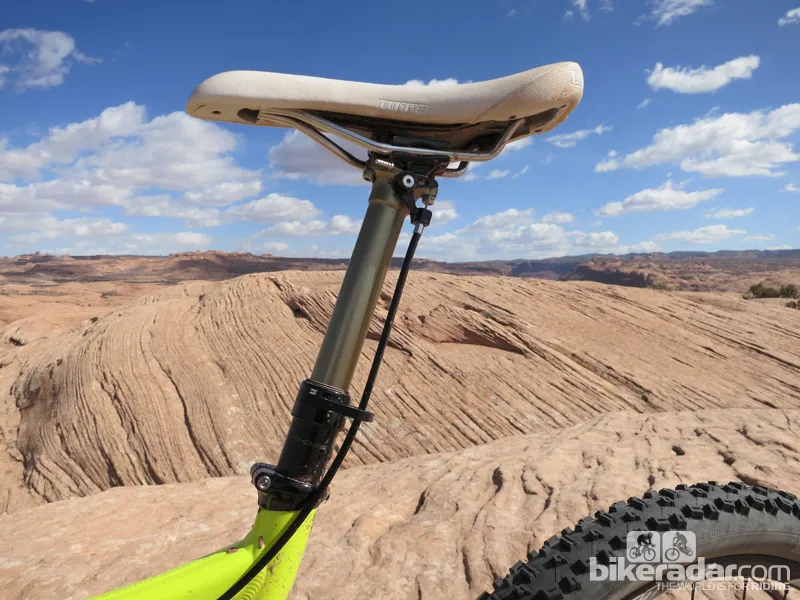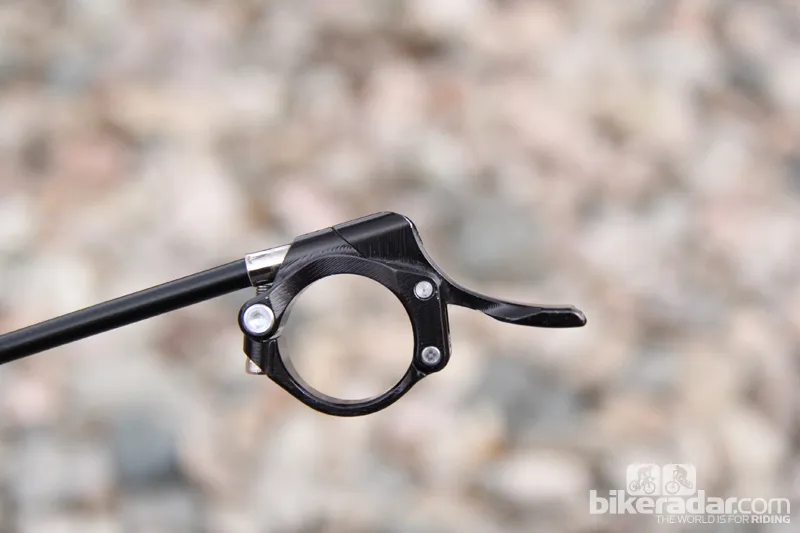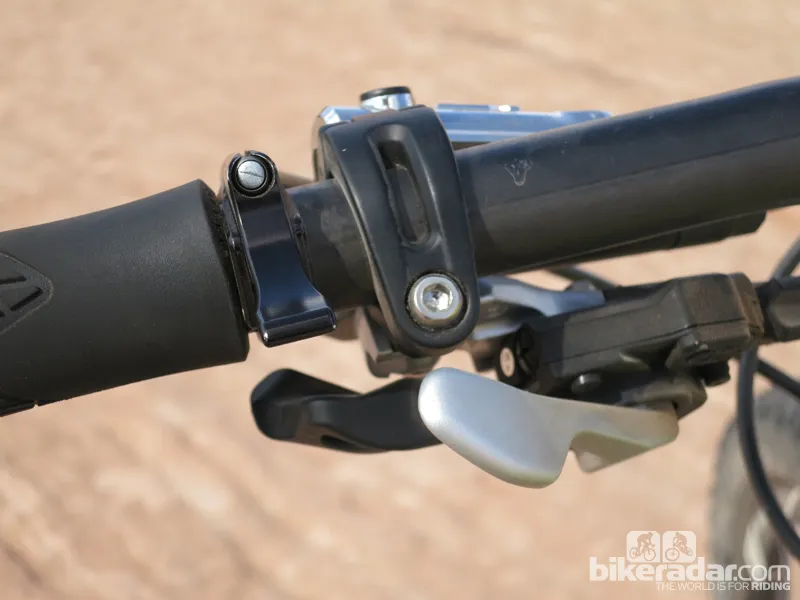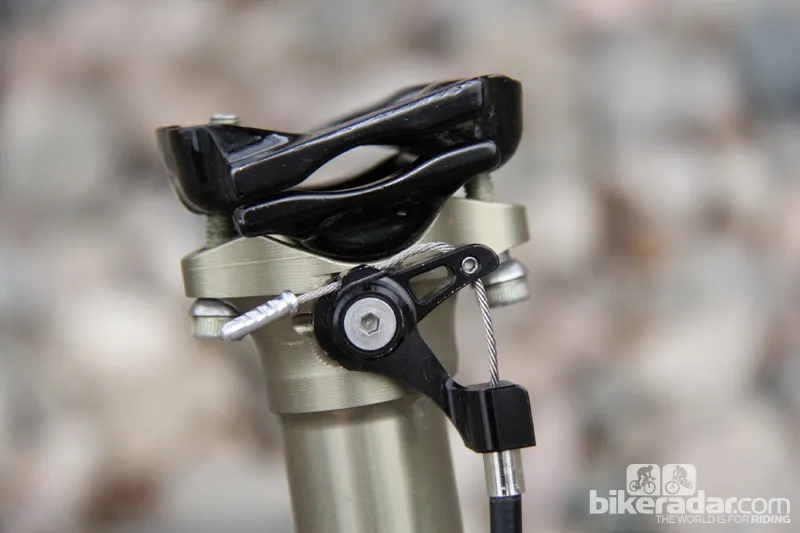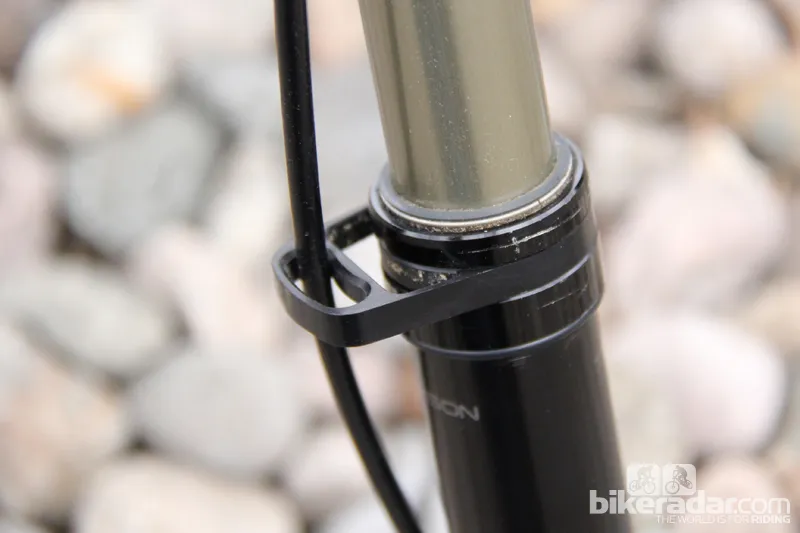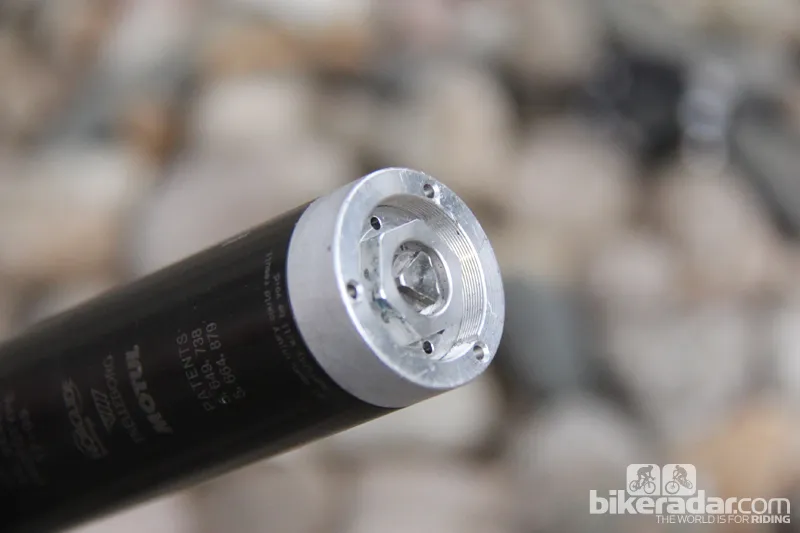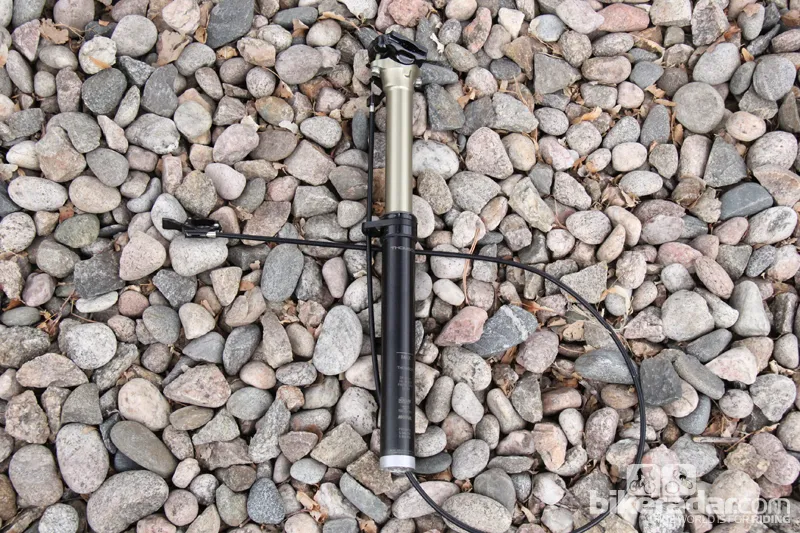Thomson has a hard-earned reputation for building quality stems and seatposts, so the buzz was understandable when the company unveiled a near-production dropper seatpost at the 2012 Interbike trade show.
Thomson’s marketing manager, David Parrett, was kind enough to loan BikeRadar his personal preproduction model so we could bring you an exclusive first ride review.
Spec
- 5in (125mm) of infinitely adjustable travel
- Available in 30.9mm and 31.6mm sizes
- 400mm in length (212mm max insertion)
- 590g with remote and cable
- Available April 2013
How it works
Thomson dropper seatpost first look
Video: Thompson Elite Dropper hydraulic seatpost
When the rider pushes the handlebar-mounted lever, a cable pulls on a cam that rotates, allowing the seatpost to move through its 5in (125mm) of travel. Internally, the Thomson Elite Dropper uses a nitrogen cartridge pressurized to 200psi, which acts as the return spring.
A second, oil-filled cartridge provides damping, controlling the speed at which the seatpost drops and extends. High-quality Norglide bushings keep radial (side to side) play to a minimum.
While the internals aren’t user serviceable, Thomson does plan to make rebuild kits available to shops. According to Parrett, the only maintenance the end user should need to complete is the occasional clearance of the upper (sliding portion) and outer seal with Bike Lust or a similar cleaner/polish.
Ride impressions
It’s possible to judge any bicycle component by how much you notice it while you’re riding. The parts that function without you realizing they're doing their jobs are generally the ones that work the best. This was certainly the case with the Thomson Elite Dropper seatpost.
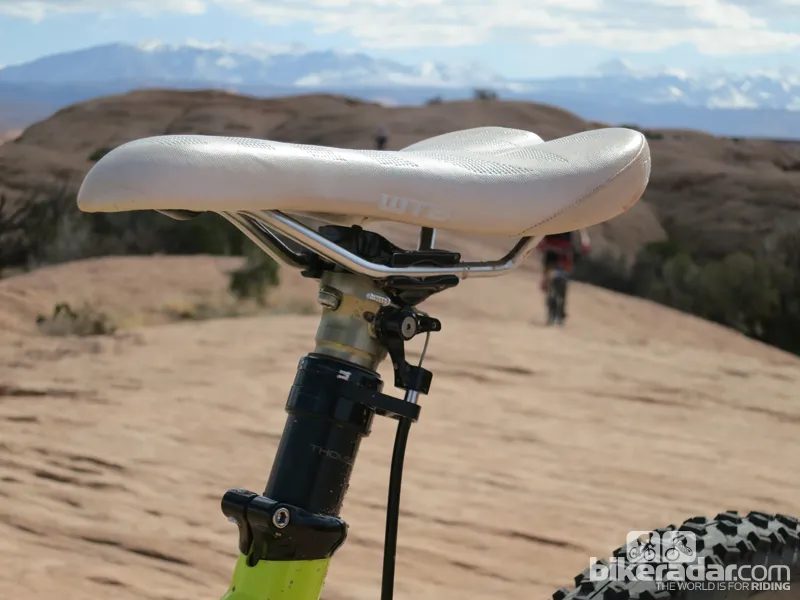
The first thing we noticed was how quiet the post was – it was completely silent, with no audible 'thunk' on full extension. Initially, this left us guessing as to when it had fully extended, but it didn’t take long for us to trust that the post had done its job.
Drop and return speeds were both ideal. Unlike other dropper posts, the return speed can’t be tuned via air pressure adjustments to suit rider preference. You can, however, modulate the speed at which the seatpost compresses and extends by how quickly you press and release the lever.
Because ours was a preproduction sample, it lacked the additional damping that will slow the seatpost’s return speed in the last 15mm of travel and prevent it slamming into your nether region. Even without this additional damping, the post’s return speed felt dialed.
The Elite Dropper we tested had already been put through the ringer by Parrett. We put another 30 hours on the post on the trails surrounding Fort Collins, Colorado, and Moab, Utah. Despite the number of miles and hours we completed, radial play between the upper and lower portions of the post was almost undetectable.
Minor details
We offer the criticisms below with the caveat that this is a preproduction sample – some of the details might yet change. First off, while the remote lever is appreciably compact, there’s no quick way to adjust cable tension. A barrel adjuster on the remote would be a great addition.
The lack of a barrel adjuster led us to our second gripe. The cable fixing screw uses a minuscule 1.5mm hex screw to hold the cable in place. While this proved adequate for securing the cable, it’s not very field serviceable – many multi-tools don’t have anything smaller than a 2.5mm hex key. The lever mounts to the bar using a 2.5mm hex bolt, so using the same size bolt to secure the cable to the seatpost makes sense to us.
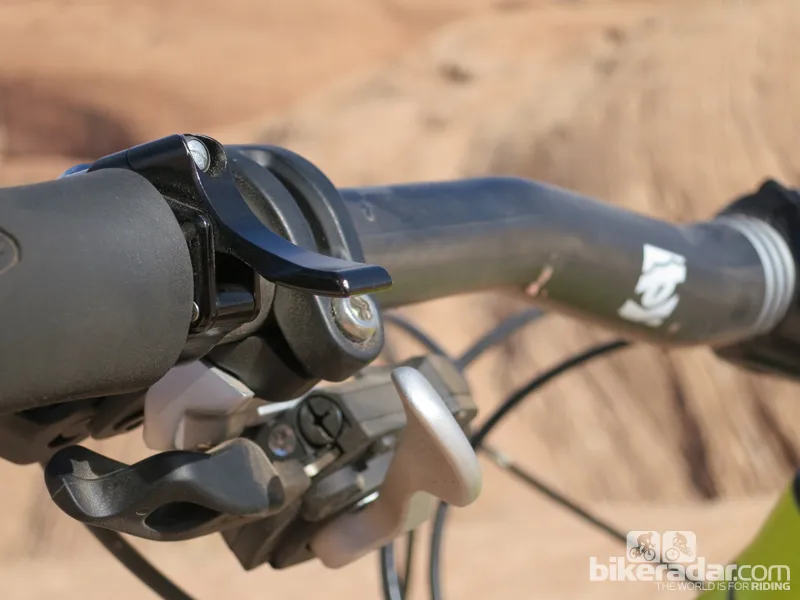
The lever is quite compact, though it does stick out towards the rider
The shape of the lever is a bit of a sticking point, too. As it sticks out towards the rider, angling the lever so it better follows the contour of the bar would prevent people snagging their shorts on it or accidentally jamming a knee during an accidental clip out.
Already a class leader
The aforementioned criticisms are minor compared to the Elite Dropper’s performance on the trail. Its operation was flawless, with ideal drop and return speeds. Radial play at the saddle was almost undetectable, and it uses Thomson’s proven two-bolt, micro-adjustable seatpost head.
At 590g with remote, the Elite Dropper is approximately 40g heavier than a RockShox Reverb and 30g lighter than a Fox DOSS – its performance rivals both. The Elite Dropper comes with a two-year warranty against manufacturer’s defects, and the production version will be ready in early April.
BikeRadar will be providing a full score and verdict once we’ve spent time on the production version of the post.
Three more droppers in the works
Parrett said that the Elite Dropper is one of four adjustable-height seatpost projects Thomson has in the works: look for an internally routed version by June 2013, as well as a shorter travel – most likely 3in (76mm) – model designed for mountain bikes with 27.2mm diameter seat tubes. Finally, a version of the Elite Dropper designed for road and cyclocross bikes will have 2in (50mm) of drop as well as a pavé mode to provide a bit of damping.
Parrett expects the 27.2mm mountain dropper and the road dropper to be shown off at the 2013 Eurobike trade show.
